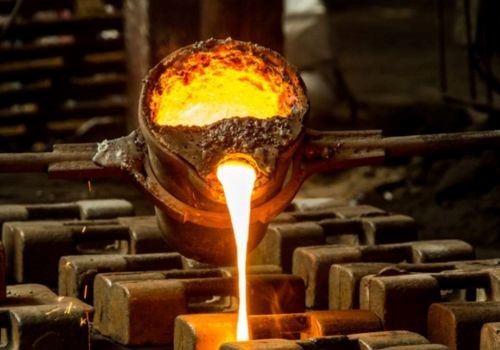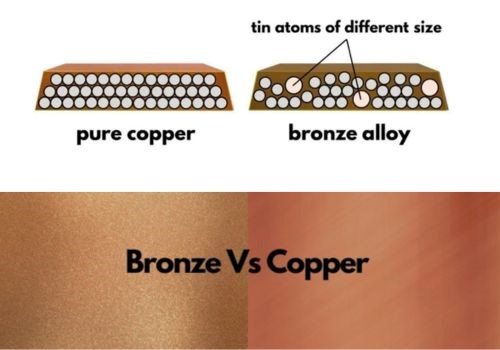You must have heard about aluminum or steel being used in fabrication processes. If you didn’t know, bronze is also a very important metal for fabrication.
In most cases, bronze is mostly used in manufacturing small parts, such as bronze casting, architecture, bronze wool, sculpture, tools, and other instruments.
- 913 degree Celsius
- 1675 degree Fahrenheit

Composition of Bronze
| Element | Typical % | Additional Notes |
| Copper (Cu) | 88% | Base element |
| Tin (Sn) | 10% | Traditional alloying element |
| Zinc (Zn) & Lead (Pb) | 2% Total | Often combined, may vary slightly |
| Other Elements | Trace Amounts | Aluminum (Al), Silicon (Si), Phosphorus (P) for specific properties |
Factors Affecting the Melting Point of Bronze
The melting point of Bronze keeps changing when the composition changes. The main alloying elements in bronze are copper and tin.
Although copper melting point is 1083°C (1983°F), and tin raises its melting point for better heat resistance.
Alternatively, bronze may contain other elements as part of the alloy. Usually, these elements may affect the bronze melting point.
Let’s look at two common scenarios:
- Aluminum bronze has about 6% to 12% aluminum. Depending on the quantity of aluminum, it will slightly lower the melting point of bronze.
- Silicone bronze has a melting point of 1025°C, which is slightly higher than bronze.
In short, bronze melting point will depending on the alloy composition. For instance, there are certain impurities that will lower the melting point of bronze.

Melting Point Ranges for Different Bronze Types
Bronze, being an alloy, has different melting points for various compositions. Let’s look at the breakdown:
| Bronze Type | Melting Point Range (°C) | Melting Point Range (°F) |
| Tin Bronze (Traditional Bronze) | 870°C – 950°C | 1600°F – 1742°F |
| Aluminum Bronze | 900°C – 1040°C | 1652°F – 1904°F |
| Silicon Bronze | 950°C – 1020°C | 1742°F – 1868°F |
| Leaded Bronze | 800°C – 900°C | 1472°F – 1652°F |
Innovations in Bronze Melting Techniques
Depending on specific applications, the melting point of bronze may vary slightly. This is evident in various industries such as vacuum melting, continuous casting, and improved refractory linings.
Furthermore, more bronze melting techniques have also evolved over time. Most technologies aim to boost efficiency while ensuring sustainability.
Besides, adopting modern bronze melting technologies saves both metal and energy costs.
Applications of Melting Point of Bronze

From its use in tools to the making of weapons, bronze has many uses in almost all kinds of industries. It is resistant to corrosion, and hard. This makes bronze ideal for manufacturing weapons and tools.
At the same time, bronze form an integral part of many architectural designs or fabrications. For instance, there are door frames, cabinets, and window fittings made from bronze.
Likewise, you must have heard the coins in your pockets are also made of bronze.
Instruments like cymbals, bells, and our favorite guitars are also made out of bronze.
With its diverse nature, when it is mixed with other alloys, it has many uses, like bearings, making medals for the Olympics, and others.
Additionally, you can create different kinds of objects or make sculptures, especially during bronze casting.
FAQs
Is Bronze Hard to Melt?
When we compare bronze with other metals, its melting point is not that high. It’s just between 800°C and 1000°C, depending on the composition when mixed with other alloys.
Is it Safe to Melt Bronze?
You should follow all the safety protocols before starting the melting process of bronze. As you know, molten metals are always risky to handle.
In short, most bronze melt at 913 degree Celsius. However, this may vary depending on alloying elements.
Additionally, the knowledge on bronze melting is critical in determining the fabrication requirements and applications.
Related Resources:
Bronze Fabrication – Source: KDM
Bronze – Source: WIKIPEDIA
Is Bronze Magnetic – Source: KDM
Melting Point of Zinc – Source: KDM
Melting Point of Magnesium – Source: KDM
Melting Point of Graphite – Source: KDM




